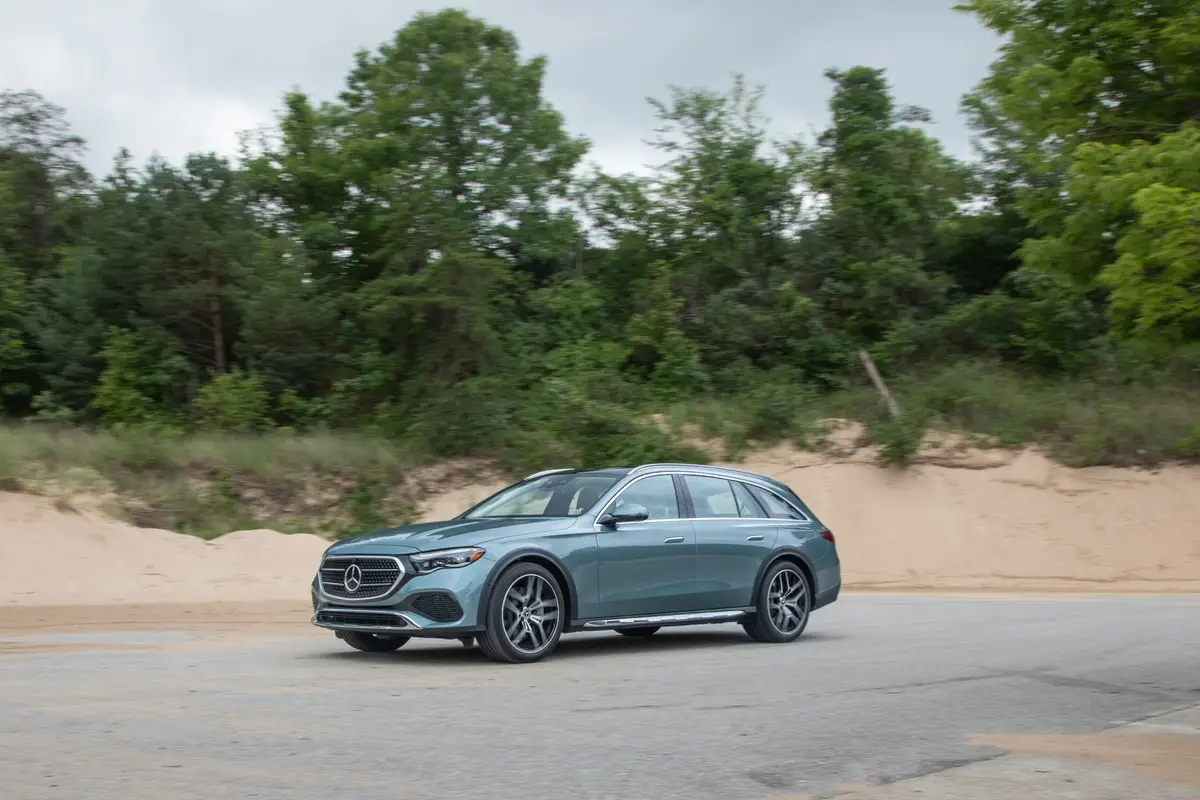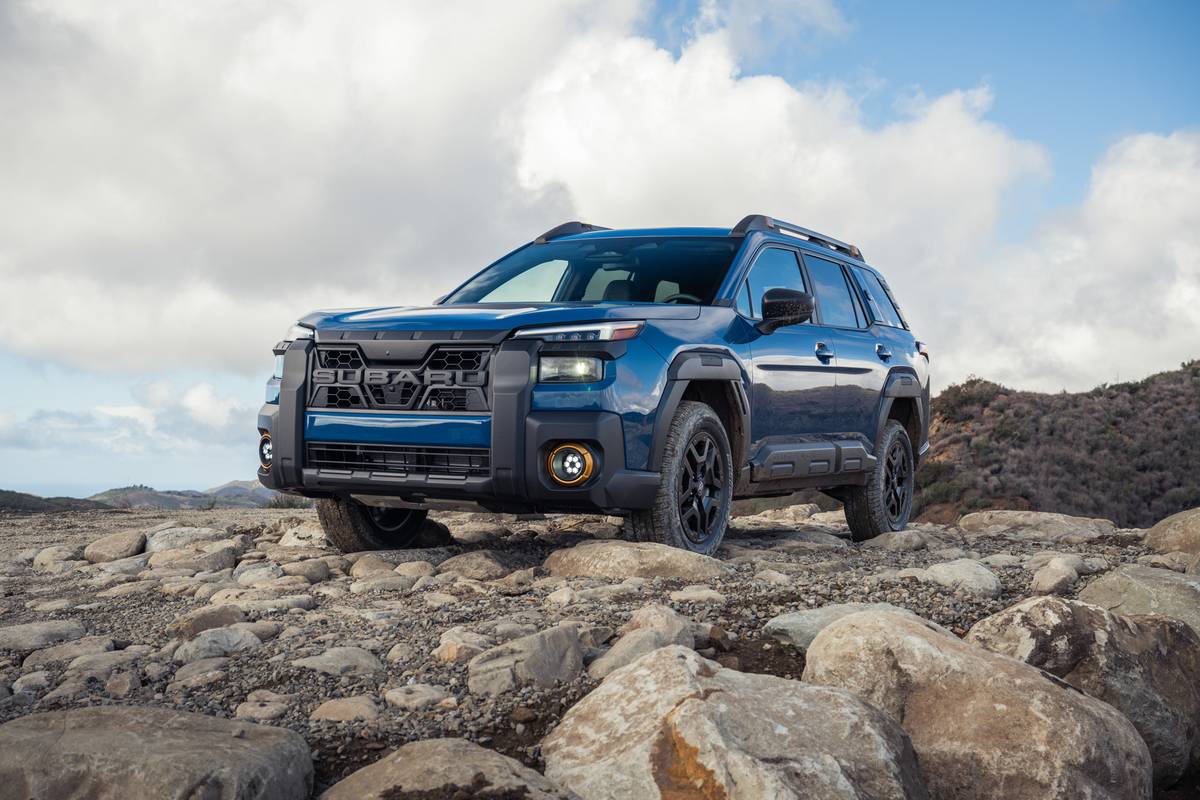TheMercuryNews.com's view
To say the Buick Rendezvous is an improvement over the Pontiac Aztek isn’t much of a compliment.
The Aztek, a slab-shaped semi-sport-utility, has been a disappointment for General Motors, whose executives felt they had created a no-lose proposition when they released the Aztek onto a SUV-crazy market in mid-2000. But the Aztek proved too ugly and too expensive to attract many buyers.
Now comes the Rendezvous, which shares a platform and many mechanicals with the Aztek. It’s Buick’s first truck and another one of those hybrid vehicles that attempts to merge the best traits of two segments.
The problem here is that the Rendezvous is neither as good as a minivan nor as good as a sport-utility.
Sure, it has three rows of seats, like a minivan, but it’s a real chore for an adult to get back into that third row, and it’s not a very comfortable perch when you arrive. Plus, when the third row is in use there’s hardly any cargo room behind it.
Sure, it has all-wheel-drive, like many sport-utilities, but it sure doesn’t look rugged the way a Nissan Xterra or a Jeep Grand Cherokee does. In fact, its tall, wide profile isn’t very attractive at all.
Visually compare a Rendezvous to an Acura MDX or a Mercedes M320 as I did during my week in the Buick, and those competing vehicles seem more sinewy and smooth in their exterior designs. The Rendezvous seems ponderous and bulky in contrast.
Perhaps that’s because I absolutely hated the exterior and interior color schemes. On the outside, our test Rendezvous was two-toned, bright white on top and a sort of shiny brown color below that GM calls light sandrift. Darker colors are much better suited for this vehicle. This is a vehicle that looks good from the front — thanks to a wide, oval grille and a contemporary light treatment — and horrible from the rear, where the minivan/SUV blending suffers the most.
On the inside, GM designers relied on three shades of brown and then tried to complement them with two metallic trim patterns — one smooth and the other rough. The result is rather jarring, at least to my eye.
I was also surprised by the horrible fuel economy numbers I compiled in a week of driving about 400 miles in the Rendezvous. The trip computer placed my mileage at 16.1 mpg, and I confirmed that with my own calculations. The window sticker claimed that I’d get 18 mpg in the city and 24 mpg on the highway, but I never approached that number.
That’s worse than a comparable GM minivan — a Pontiac Montana with the same 3.4-liter V-6 gets 19/26 — and not much better than a straight-forward mid-size SUV, like the 2002 Oldsmobile Bravada, which gets 15 and 21 mpg from its more powerful 4.2-liter in-line six-cylinder engine.
The Rendezvous uses the same V-6 as GM’s minivans. Here it makes 185 horsepower and 210 pound-feet of torque. In most uses, that’s plenty of power, even for this fairly heavy (4,024 pound) vehi cle. But up steep inclines when the vehicle was carrying four people, it just didn’t have enough oomph.
The ride was only adequate, with lots of bounce on rough patches of road and over railroad tracks. Steering was precise, and handling was predictable. Still, Buick engineers claim the Rendezvous’ ride is on par with that of Buick’s sedans, and I don’t think that’s true.
Our top-line CXL model was well-equipped with the standard Versatrak all-wheel-drive system, leather seats, a six-disc CD player, side air bags and more.
Buick has made an astute pricing decision after the Aztek debacle. The front-wheel-drive CX version starts at $25,499, including destination. An all-wheel-drive version can be had for $28,027 — or between $6,500 and $8,000 cheaper than an Acura MDX or a Lexus RX300. (Our test model, an up-level CXL version, had a window sticker just shy of $33,000.) Buick points out that the Rendezvous already is out-selling the MDX (as well as the Aztek, hich Buick doesn’t point out).
But while a step forward from the Aztek, the Rendezvous is far from a great leap ahead.
No doubt, the Rendezvous is a versatile choice — it can seat seven and comes with all-wheel-drive — and one that comes at a more affordable price tag than its Japanese rivals. Still, unless there’s more appeal to the Buick name than I think, especially here on the West Coast, it’s hard to see buyers choosing a Rendezvous over a traditional minivan or a traditional sport-utility.
Latest news



